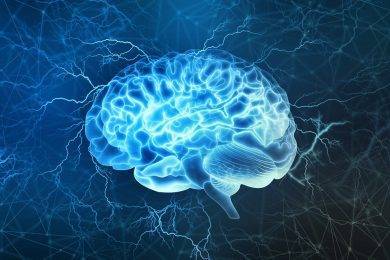Did you know that you can intentionally create new neural pathways until the day you die?
Welcome to the strange and beautiful world of neuroplasticity. If you’re completely unfamiliar with the term, don’t worry. You’ve come to the right place.
Neuroplasticity is what the biologists call that brain process that allows you to keep on increasing your neurons and the connections in your brain.
If none of that makes sense to you, we’ve got you covered. Keep on reading for our full breakdown of how does neuroplasticity works, as well as the key seven things you can do that can help you boost your neuroplasticity.
What Is Neuroplasticity?
Before starting our deep dive into the intricacies of neuroplasticity, let’s ensure that we’ve covered the basics.
In the simplest of terms, neuroplasticity is your brain’s capability to adapt and learn. Basically, the majority of neuro-experts believed that our brains are fixed once we reach the age of 25 years of age.
Generally speaking, once you hit that age, your neurons are spoken for. They will only shrivel and die.
However, the new evidence has shown something quite different and remarkable. Our neurons, therefore our brains, can actually grow and change gears through our adulthood.
This will all depend on how we treat our neural pathways. The key idea behind neuroplasticity is enabling the brain to reorganize and form new connections between its different sectors.
How Does Neuroplasticity Work?
There are three main levels that your brain could undergo neuroplastic change. Every single one works in concert with the other, so let’s take a look at them.
Chemical Change
The chemical change is usually observed in the very beginning stages of trying to learn something new.
It affects your brain’s short-term memory center, and the short-term improvement in motor skills, specifically.
Structural Change
This level of change happens when the brain alters its connections, changing its actual structure.
This one, unlike the chemical change, tends to take more time and effort. After all, it directly affects the long-term memory and the long-term improvement of motor skills.
Functional Change
When your brain’s entire networks change their form, that’s when functional change comes in.
These specific brain networks that have lighted up for the first time, get to be used over and over again, which allows them to grow and work more efficiently.
The Ways to Boost Your Neuroplasticity
As you exercise and activate different regions of your brain, the connections that link one area to another become stronger, all in preparation for the hard work that you keep on giving to your brain to solve.
These brain connections would make the jump from your brain’s grey matter to its white matter, and vice versa.
Your brain’s grey matter is the actual neural tissue that connects the regions of the brain that are responsible for your memory, emotion regulation, speech, sensory perception, self-control, and even decision-making.
The white matter, on the other hand, is a bit more passive in nature, yet no less important. It’s responsible for connecting the grey matter regions.
Now that you’ve got the foundational knowledge of what neuroplasticity entails, here’s how you can help your brain.
1. Take (More) Naps
If you haven’t already read “Why We Sleep” by Dr. Matthew Walker, we kindly urge you to do so.
In short, you’ll want to get a good night’s sleep of approximately seven to nine hours every single day. After you’ve nailed down the basics, it’s time to add a short afternoon nap.
It can be around 20 minutes or so, and it’s a great and easy way to increase your neuroplasticity. This short nap will boost the growth of your dendritic spines, which are essential connecting spots between your neurons.
2. Feed Your Brain (and the Rest of Your Body)
Sure, your brain is considered minuscule in weight in comparison to the rest of your body weight. Yet, you’d be surprised to learn that it’ll actually use up around 25% of what you eat.
Therefore, if you’re looking for better neural pathways and aiding their growth, you’ll want a healthy diet, as well as adding supplements like the BDNF supplement, which can help your body in its neuroplasticity process.
Moreover, you’ll want to make sure that you’re getting enough magnesium and vitamin D in your diet as well.
3. Set Work-Life Boundaries
Yes, we’re asking you to not let your workday linger into the night.
After all, if you’re asking your brain to grow (and maintain) new neural pathways, you have to get in some adequate downtime.
A great way to do so is by setting solid boundaries between your working hours and the rest of your day.
In addition to getting your body to relax enough so falling asleep would be a breeze, it’s actually rather useful in releasing some extra endorphins, as you’ll get to enjoy your evening.
4. Learn More Vocabulary Words
No, your English teacher didn’t hunt you down because your vocabulary is rather lacking.
When you learn a new word every day or so, you’ll be asking your brain to spark new neural pathways that are both visual (spelling) and auditory (pronunciation).
5. Use Your Non-Dominant Hand
If you’ve ever seen an ambidextrous friend switch their pen from one hand to another as they’re writing, you’d know how cool it looks.
You’ll want to do something similar. When you’re doing a variety of exercises using your non-dominant hand, you’re forming new neural pathways as you’re teaching your brain a different way to handle the world.
For instance, if you’re right-handed, try to wash your teeth using your left hand before bed tonight.
Unlocking the Human Brain
We know that it can be overwhelming to learn that you can (and should) train your brain so that you have a lower chance of developing dementia or Alzheimer’s as you grow old.
However, it’s all about integrating fun activities into your daily routine and transforming them into life-long habits.
Hopefully, our breakdown of how does neuroplasticity work has shed some light on the process and simplified the ideas for you, so you can start applying them to real-life with minimal friction.











